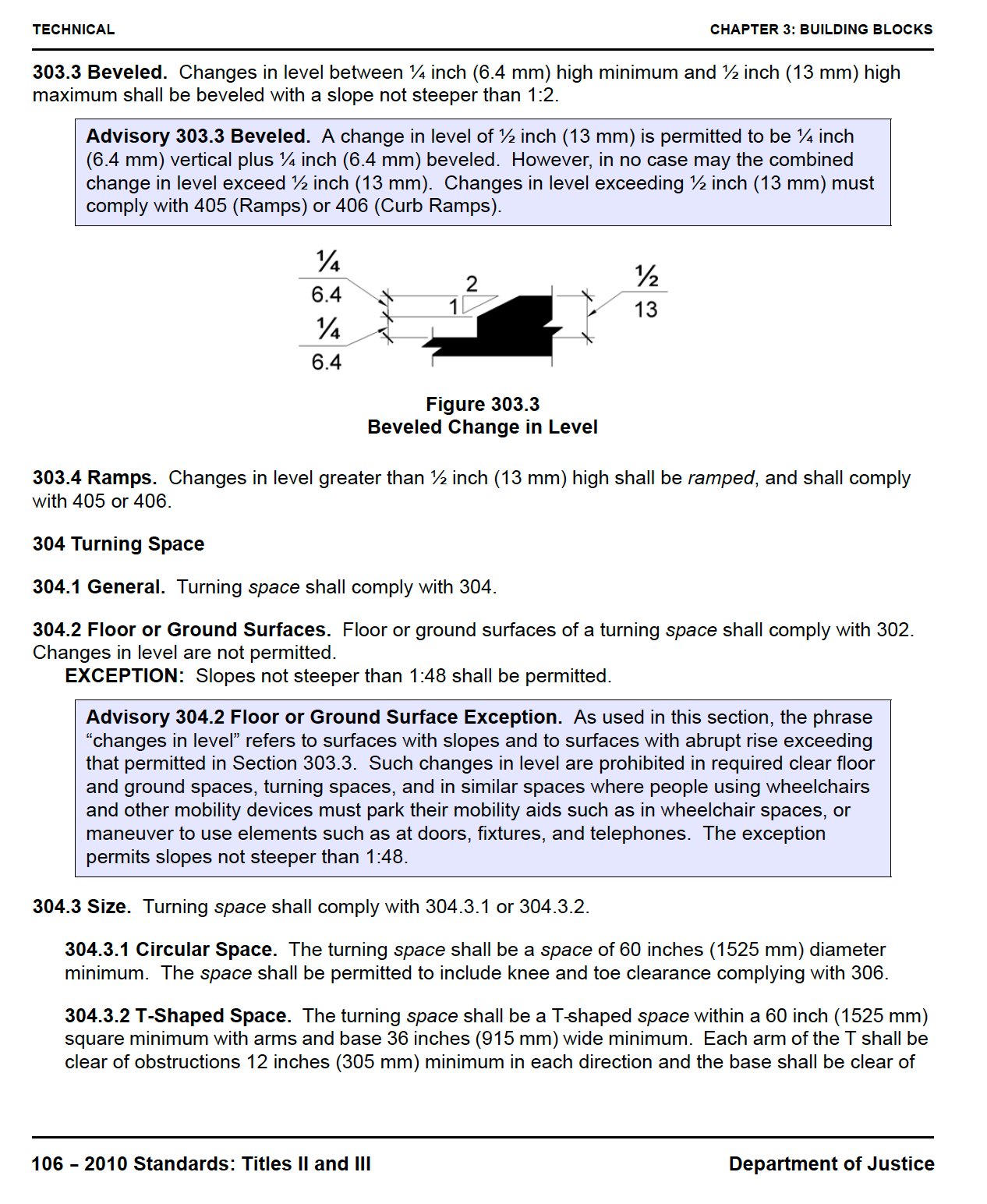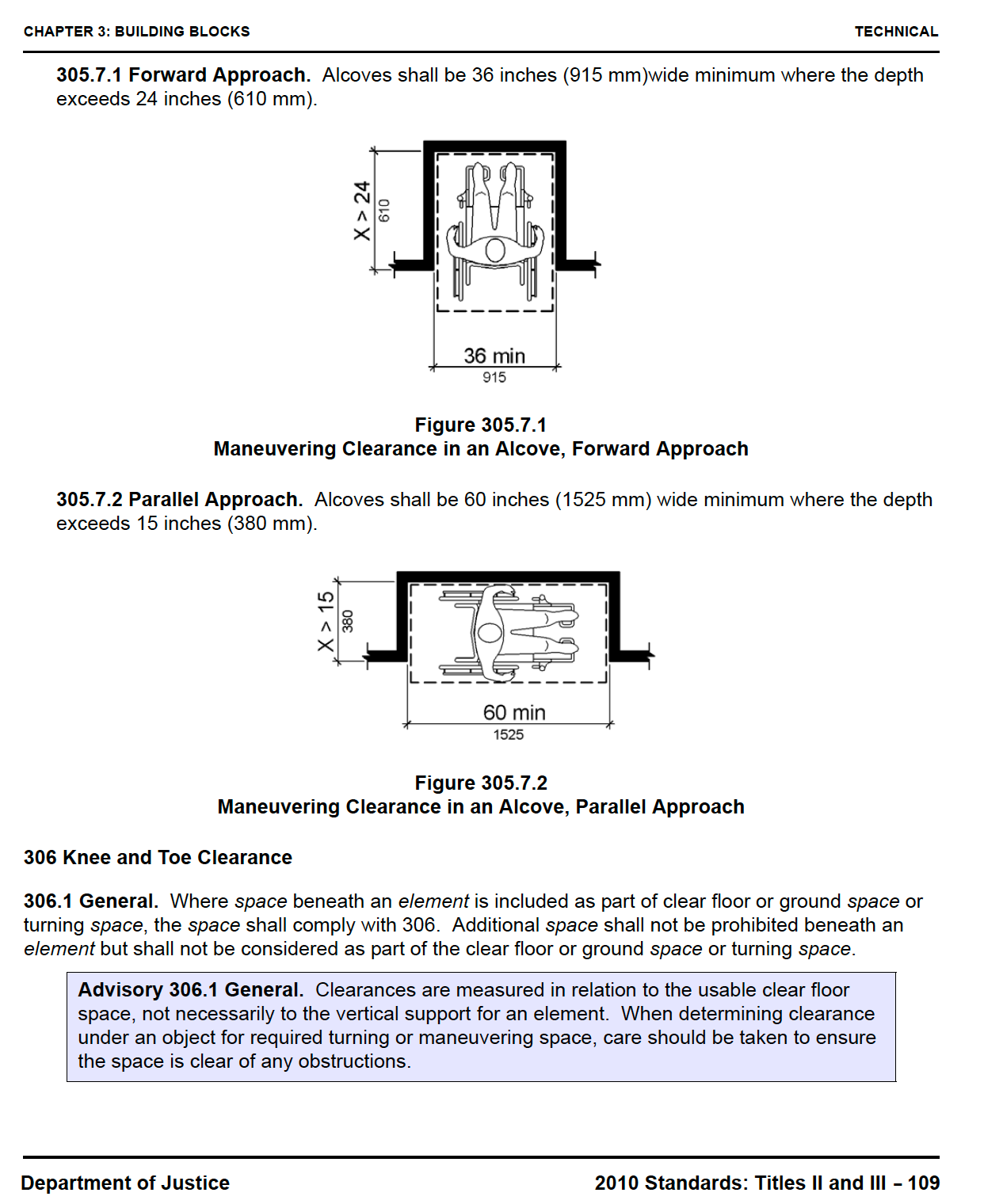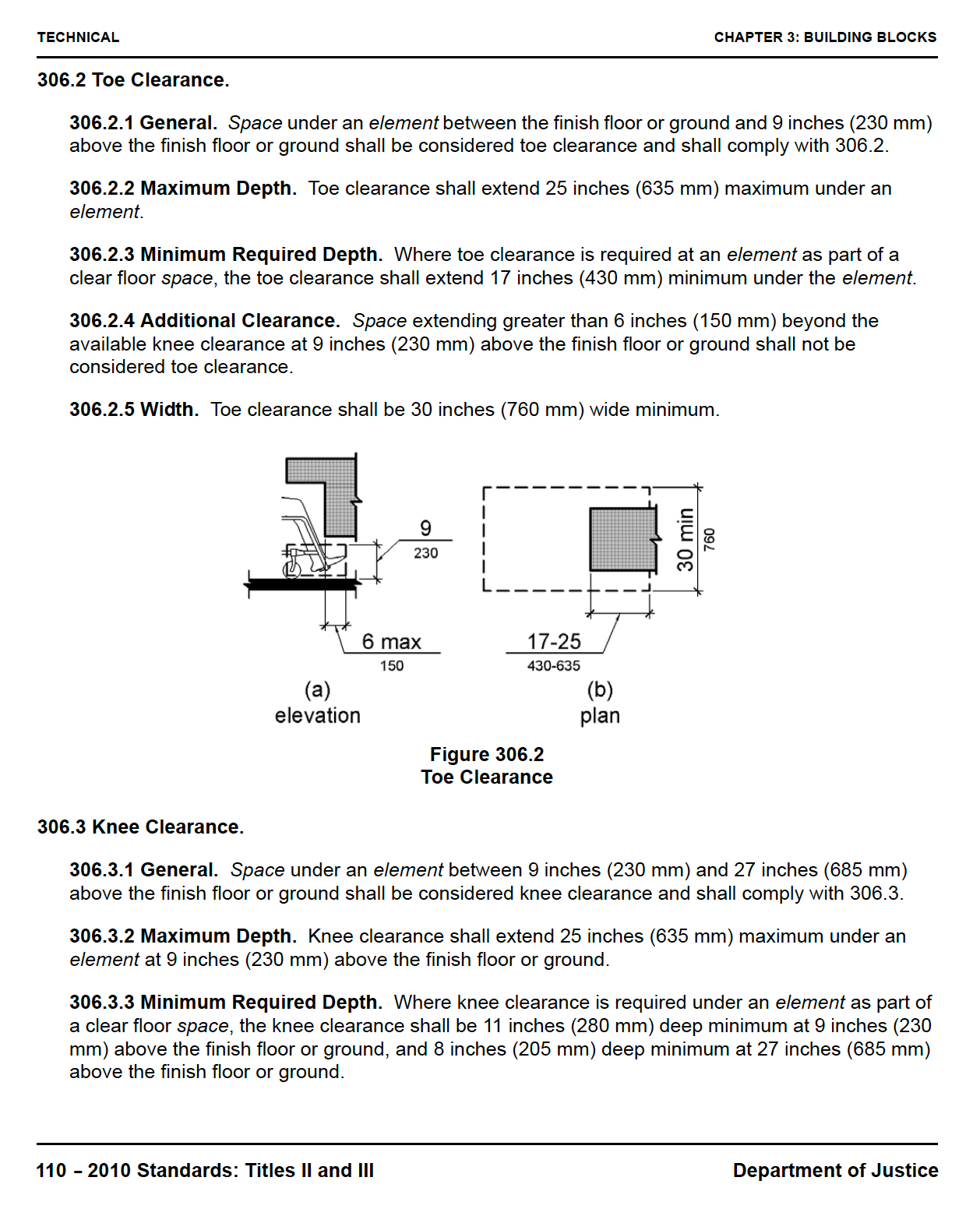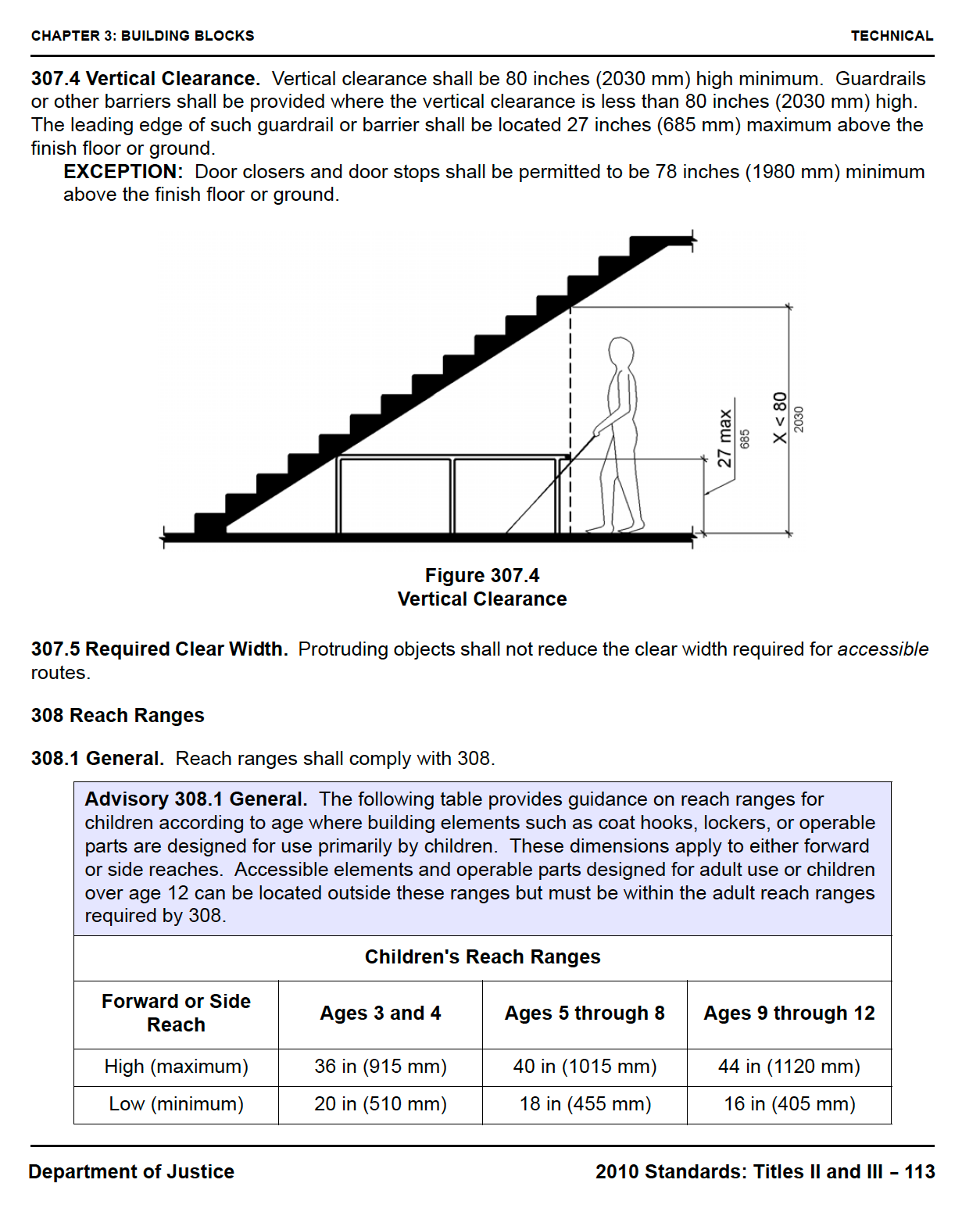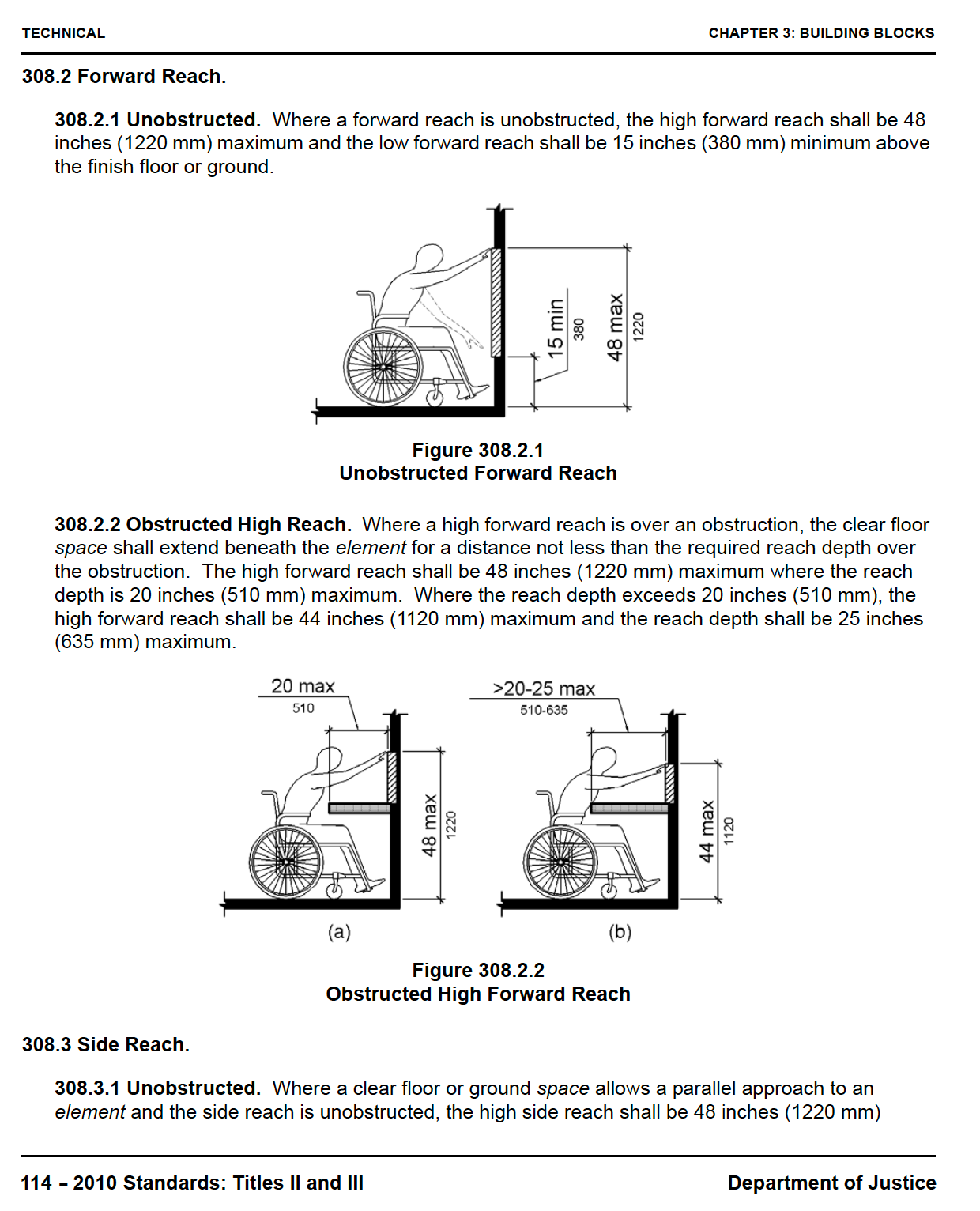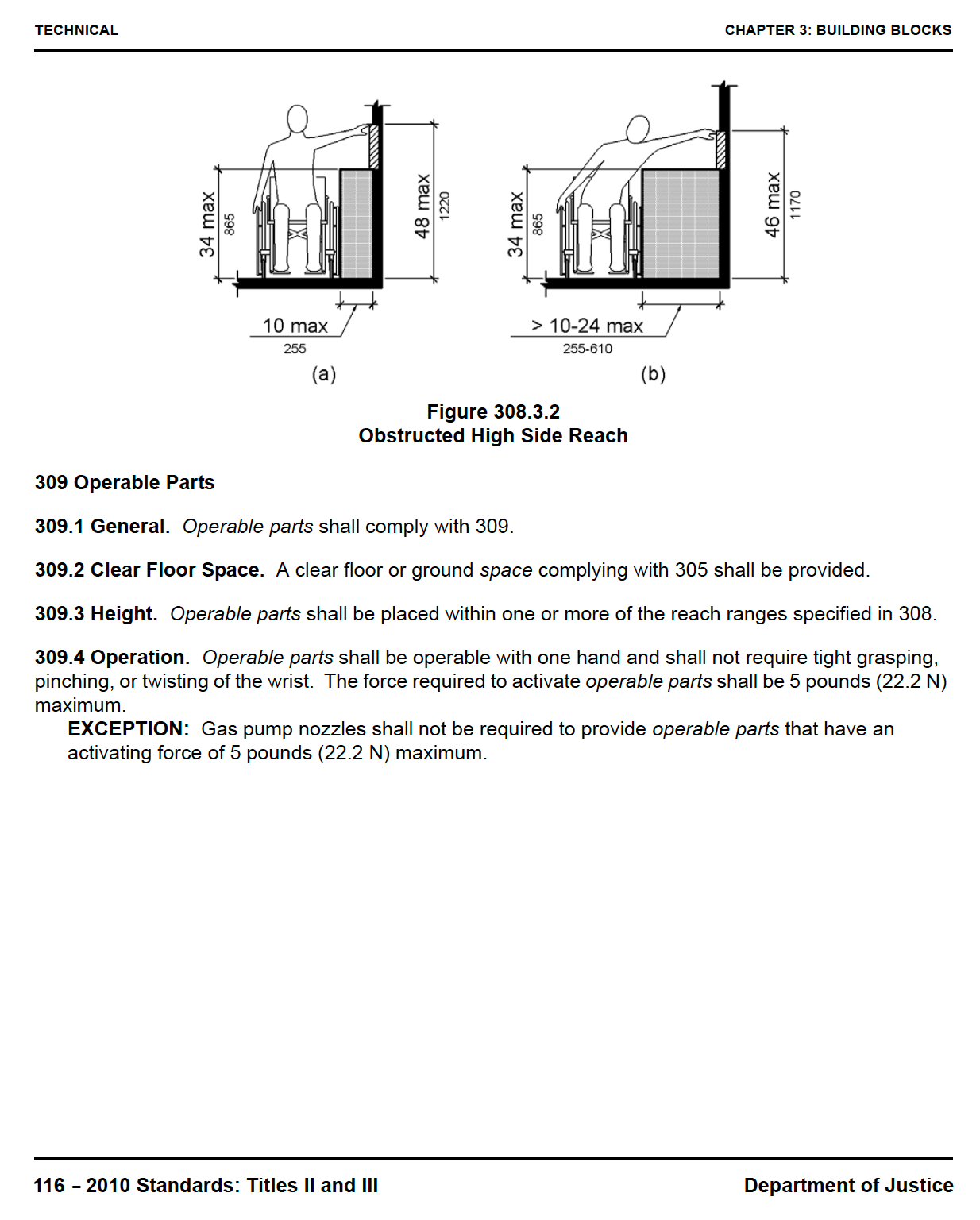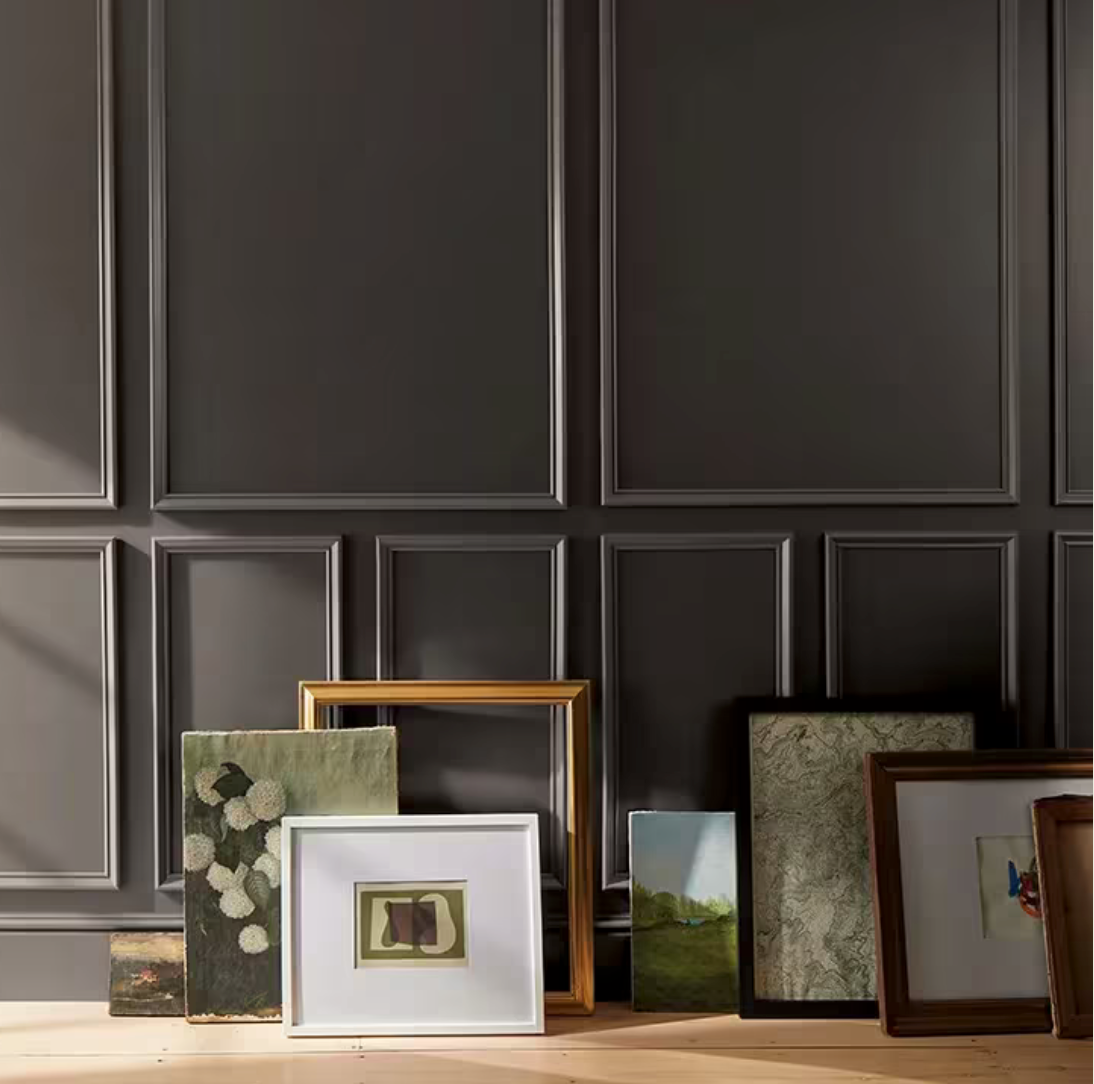The Universal User: Designing for everyone.
2010 ADA Standards for Accessible Design
Accessibility and inclusivity in interior design is imperative.
The Americans with Disabilities Act (ADA) has been a cornerstone in ensuring that spaces are not just aesthetically pleasing but also functionally accessible to all individuals, regardless of their physical abilities.
The concept of universal design, as advocated by the ADA, emphasizes creating environments that are usable by all people, to the greatest extent possible, without the need for adaptation or specialized design.
This goes beyond mere compliance with regulations; it's about fostering environments that are welcoming and functional for everyone. Universal design principles recognize that the needs of individuals vary widely and that an inclusive approach to design benefits society as a whole.
One of the key areas where the principles of the ADA come into play is in countertop heights. We usually keep our countertops 29-34" AFF max but often times we create varying height solutions where it allows us to have bar height and ADA height in one solution. This not only enhances accessibility for individuals with disabilities but also promotes inclusivity by ensuring that everyone, regardless of their physical stature or mobility, can comfortably utilize the space.
Check out the 2010 ADA Standards for Accessible Design to learn more about guidelines for designing for the universal user.
https://www.ada.gov/law-and-regs/design-standards/2010-stds/
These standards provide comprehensive guidelines covering a range of aspects, from doorway widths and clearances to reach ranges and maneuvering space requirements. By familiarizing themselves with these standards, designers can ensure that their projects not only meet legal requirements but also prioritize the needs of all users.
In the realm of interior design, particularly within multi-family housing, considerations for accessibility and inclusivity are not just commendable attributes; they're essential components of responsible design.
Accessibility and inclusivity are not optional considerations in interior design; they're fundamental aspects that contribute to creating spaces that are truly livable for everyone.
By embracing the principles of universal design and leveraging innovative solutions like adjustable countertops, designers can play a pivotal role in shaping environments that are welcoming, functional, and inclusive for all.
We reference the entire guide frequently, the attached screenshots are from Chapter 3 Building Blocks that have a plethora of knowledge for interior designers as we navigate commercial interior applications
#ADA #universaldesign #AmericanswithDisabilitiesAct
